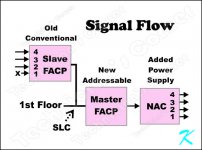Great question. Unfortunately, monitor modules will not be able to differentiate device type. The contact side of the monitor module is only looking for its supervisory (closed circuit) voltage facilitated by its end-of-line resistor. That's all it does: supervise wiring and electrical contacts on the devices.
On a side note, it befuddles me why installers mix zones with different types of initiating devices UNLESS it's a small setting. Say I have a daycare and a conventional fire alarm system. I would design such that each classroom is on its own zone. Typically, there is one or two detectors and one pull station. In that situation, device mixing on the same zone is fine because zone coverage is restricted to a small area; therefore, it's still time-wise and efficient to find the activated device. Other than that, I discourage mixing device types on the same zone.
If the supervising station wants to know which device has activated, the installer will either need to separate the zones by device type and location or hard sell an addressable system to the customer. Selling an addressable system would be the better option, in my opinion. This is an opportunity for the customer to upgrade their system, especially if it's an older system or has been installed for two or three decades.
I have a site where I just conducted a system analysis for full replacement, except notification appliances. Everything is upgrading, to include all 5 power supplies. We sold it to the customer as I previously stated.

